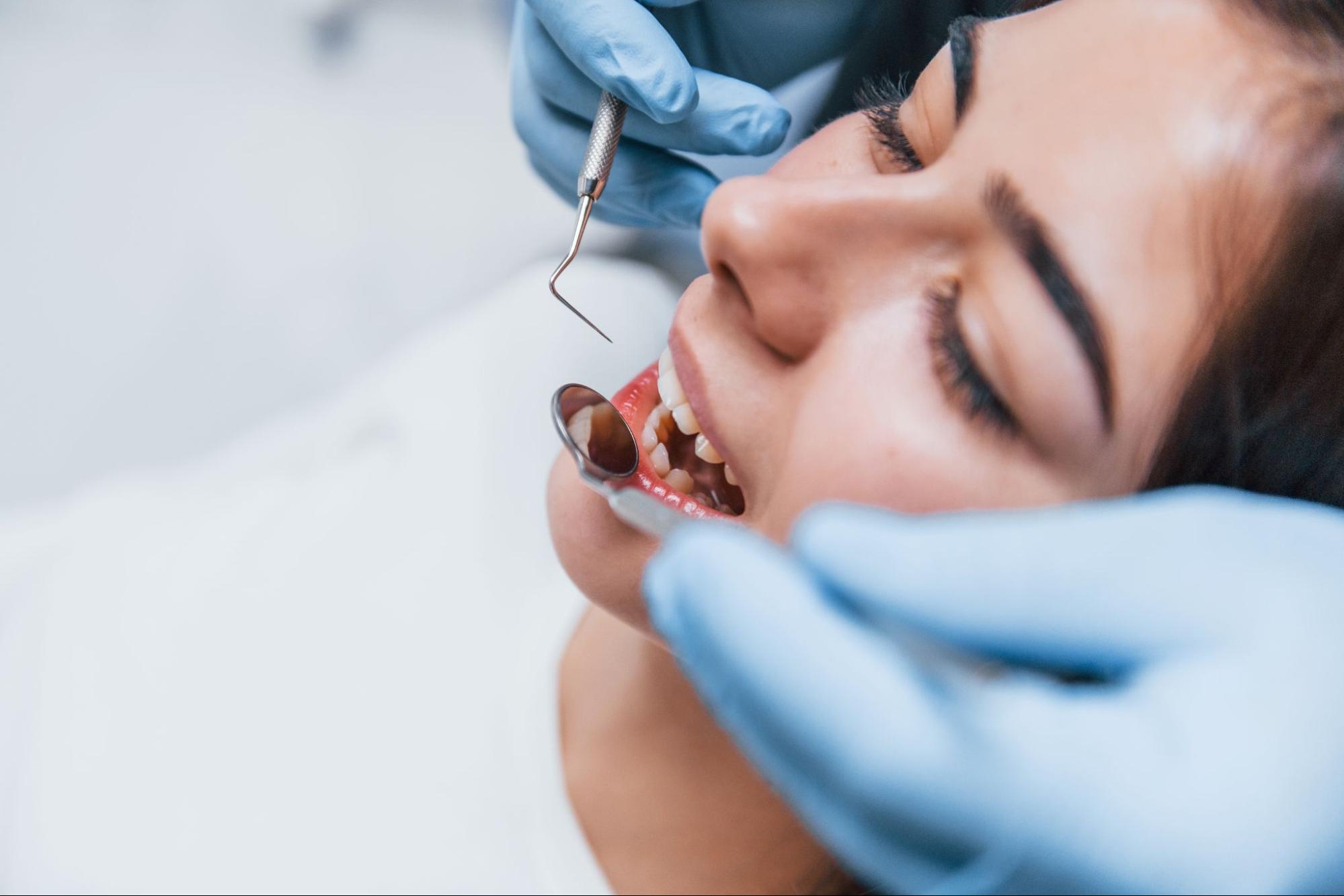Dental bonding offers a quick fix for chipped, stained, or slightly misaligned teeth. It uses tooth-colored resin to improve appearance and function. It’s a common option for those looking for a less invasive and more affordable alternative to veneers or crowns. While bonding can deliver strong cosmetic results, the material doesn’t last forever. Its durability depends on habits, placement, and maintenance. Knowing what affects the bonding lifespan helps set realistic expectations and guides better care.
Understanding Bonding Teeth and Its Materials
Tooth bonding is a cosmetic dental procedure that uses tooth-colored composite resin to restore or enhance a tooth’s shape, color, or structure. It’s typically applied in a single visit and molded to fit naturally with your existing teeth. Before the process, it helps to learn what materials are used, which dental issues bonding can address, and who makes a good candidate for this treatment.
Common Bonding Materials
Bonding materials are selected based on how they match the tooth’s natural look and how they respond to wear and pressure. These materials must withstand daily functions like biting and speaking while blending in visually. Below are the most used options in dental bonding procedures:
Composite Resin
This is the most widely used material in tooth bonding procedures. Dentists shape and polish it to mimic natural teeth, making it ideal for cosmetic improvements. It bonds well to enamel and is easily repaired if damaged.
Glass Ionomer
This material releases fluoride, which helps support the surrounding tooth structure. It’s typically used in non-biting areas or for temporary fixes. The finish isn’t as smooth as composite, but it sometimes offers added protection.
Resin-Modified Glass Ionomer
A blend of composite resin and glass ionomer, this material offers better aesthetics than traditional glass ionomer. It’s also more durable, making it useful in certain low-stress zones. Dentists may choose it for patients who need both looks and fluoride release.
Dental Problems Corrected by Bonding Teeth
Bonding helps fix visible and minor structural problems affecting appearance and function. Dentists often use it to restore confidence in a smile without committing to more invasive procedures. The following are common issues that bonding effectively corrects:
Chipped or Cracked Teeth
Bonding covers and reshapes minor chips or surface cracks. The material protects the exposed areas and restores a smooth finish. It also prevents further damage caused by sharp edges or enamel loss.
Gaps Between Teeth
For patients with small gaps, bonding fills the space to create a more uniform appearance. It’s a cosmetic fix that doesn’t require orthodontics. The resin blends seamlessly and helps teeth appear evenly spaced.
Discolored Teeth
When teeth don’t respond to whitening treatments, bonding hides the stains using color-matched resin. It creates an even shade that blends in with surrounding teeth. This works best for discoloration due to medication or trauma.
Worn-Down Edges
Bonding can rebuild worn edges caused by grinding or aging. It improves tooth shape and alignment while restoring height, reducing sensitivity in exposed areas.
Irregularly Shaped Teeth
If a tooth looks shorter or smaller than the others, bonding helps adjust its appearance. The resin adds bulk to create better proportion and symmetry. This works well for cosmetic corrections without braces or veneers.
Who Should Consider Bonding Teeth Treatment?
Dental bonding is often recommended for patients who want cosmetic improvements without surgery or long recovery times. It works best on healthy teeth that need minor corrections. The following groups often benefit from this type of dental work:
People With Minor Cosmetic Flaws
Anyone dealing with small chips, stains, or uneven tooth edges may consider bonding. It’s a straightforward fix that enhances the appearance quickly. The results blend in naturally and usually require no downtime.
Patients Who Don’t Want Veneers or Crowns
Some prefer bonding because it doesn’t remove as much of the natural tooth. The procedure is less invasive and typically reversible. It’s ideal for those who want flexibility in their cosmetic choices.
Teens or Young Adults Needing Temporary Fixes
Younger patients who are still growing might get bonding as a temporary cosmetic fix. It’s a good solution while waiting for more permanent options later on. The procedure is fast and doesn’t affect natural tooth development.
Those on a Budget
Bonding usually costs less than veneers or crowns. It offers a cosmetic solution that still looks natural and performs well. Patients seeking affordable treatment often start with bonding to improve their smile.
How Long Do Bonding Teeth Usually Last?
Tooth bonding isn’t designed to last forever but holds up well for cosmetic fixes when maintained correctly. The material can wear down, chip, or stain over time, especially if placed in areas that take on heavy pressure. Longevity depends on where the bonding is applied, how teeth are used, and how well daily care is managed. Before considering repairs or replacements, it helps to know the average lifespan for different bonding situations.
Bonding on Front Teeth
Front teeth typically hold up longer since they aren’t used for chewing or grinding. It lasts from five to ten years. Bonding in this area is mostly cosmetic and takes less of an impact daily. Good brushing habits and avoiding staining foods can help it reach the higher end of the range. Dentists often see bonding last closer to ten years when no biting force is involved.
Bonding on Biting Surfaces
Bonded areas exposed to chewing and biting tend to break down sooner, typically within three to five years. Molars or premolars wear faster due to constant pressure from eating. Chips and cracks are more likely to develop in these zones. Regular touch-ups may be needed to keep the bonding intact.
Well-Maintained Bonding
Proper dental care can stretch the lifespan of bonding closer to a full decade or more. This includes avoiding hard foods, using a soft toothbrush, and getting routine checkups. Patients who don’t grind their teeth or bite their nails usually see fewer issues. Maintenance plays a direct role in how long the material lasts.
Bonding in High-Stress Cases
Teeth exposed to constant stress, such as grinding or clenching, wear down fast, typically in one to two years. Even strong resin can’t hold up against repeated pressure without protection. Damage may show within a couple of years if habits aren’t corrected. In these cases, dentists often recommend protective guards or alternative treatments.
Maintenance to Help Bonding Teeth Last Longer
Bonded teeth hold up better when backed by consistent care and small changes in daily routines. While bonding can wear down over time, there are ways to slow that process and get closer to the higher end of its lifespan. Simple habits, regular checkups, and avoiding specific triggers make a difference. These steps help reduce the risk of chips, stains, and early damage:
Use a Mouthguard if You Grind Your Teeth
Clenching or grinding puts pressure on the bonded surface and wears it down faster. A custom night guard protects your teeth while you sleep and helps preserve the bonded area. Most patients don’t notice they grind until visible damage appears. Using a guard early prevents future cracks or chips.
Schedule Regular Dental Checkups
Routine dental exams allow your dentist to spot bonding issues before they worsen. Polishing can restore the appearance and smoothness of the resin. Dentists can also catch areas where the bonding is starting to lift or stain. Staying on schedule helps extend the material’s life.
Avoid Hard and Sticky Foods
Biting into ice, hard candy, or chewy snacks can cause the resin to crack or pull away. Sticky foods may tug at the edges and weaken the bonding. Over time, this kind of stress adds up and shortens its lifespan. Softer foods are safer and reduce the chance of early repairs.
Brush With a Soft Toothbrush and Gentle Toothpaste
A soft brush prevents scratching or wearing down the bonding material. Non-abrasive toothpaste protects the finish and keeps the surface smooth. Whitening products may dull or discolor bonding since they’re not designed for resin. Gentle brushing keeps bonded teeth clean without damage.
Limit Dark-Colored Beverages
Coffee, tea, red wine, and soda can stain bonding faster than natural enamel. Resin is more porous, so discoloration builds up over time. Drinking through a straw helps reduce contact, especially with cold drinks. Rinsing your mouth after these beverages also helps protect the appearance.
Find Out if Bonding Teeth Fits Your Smile Goals
Teeth bonding works best for minor cosmetic fixes that don’t require major changes to your natural tooth structure. It’s a quick and cost-effective option for improving your smile without a long recovery or permanent alteration. The results depend heavily on placement, habits, and long-term care. Regular dental visits, good hygiene, and a few lifestyle adjustments help the material last longer. If you’re looking for a low-commitment way to improve your teeth, bonding might be the right fit.
Find out if bonding teeth is right for you by visiting Meader Family Dentistry’s blog. Learn more about our services.






